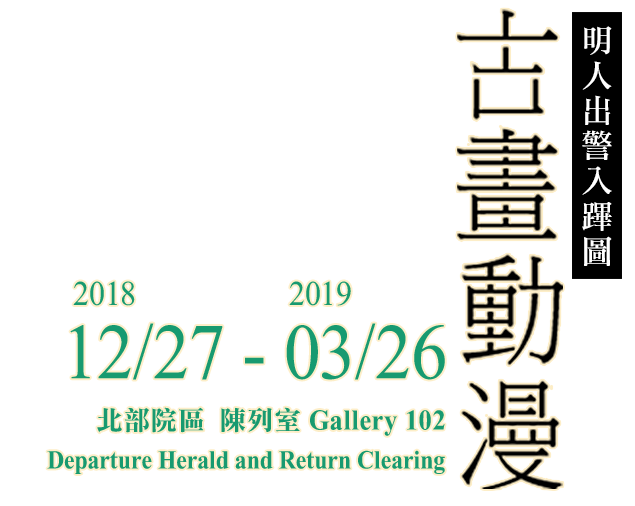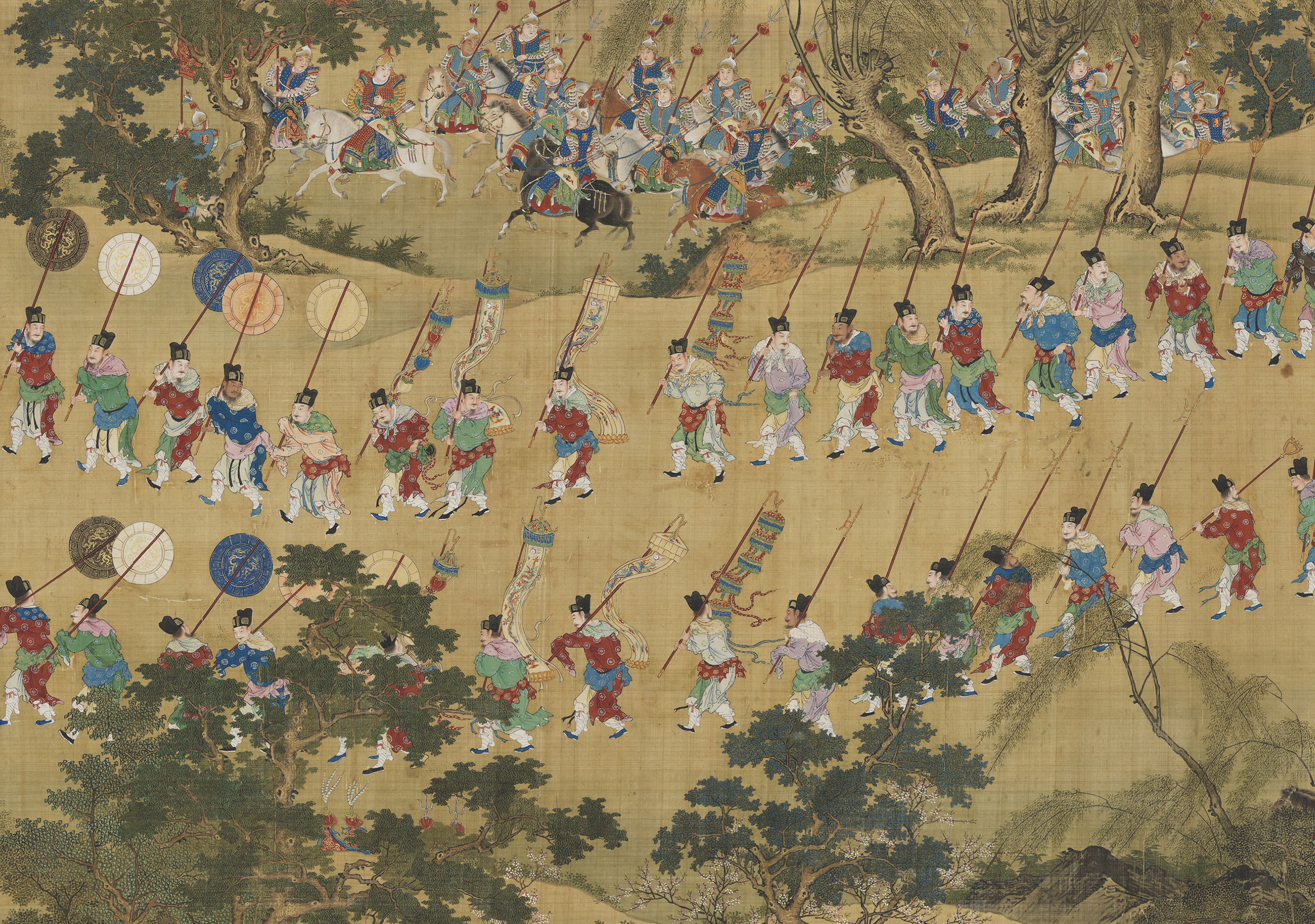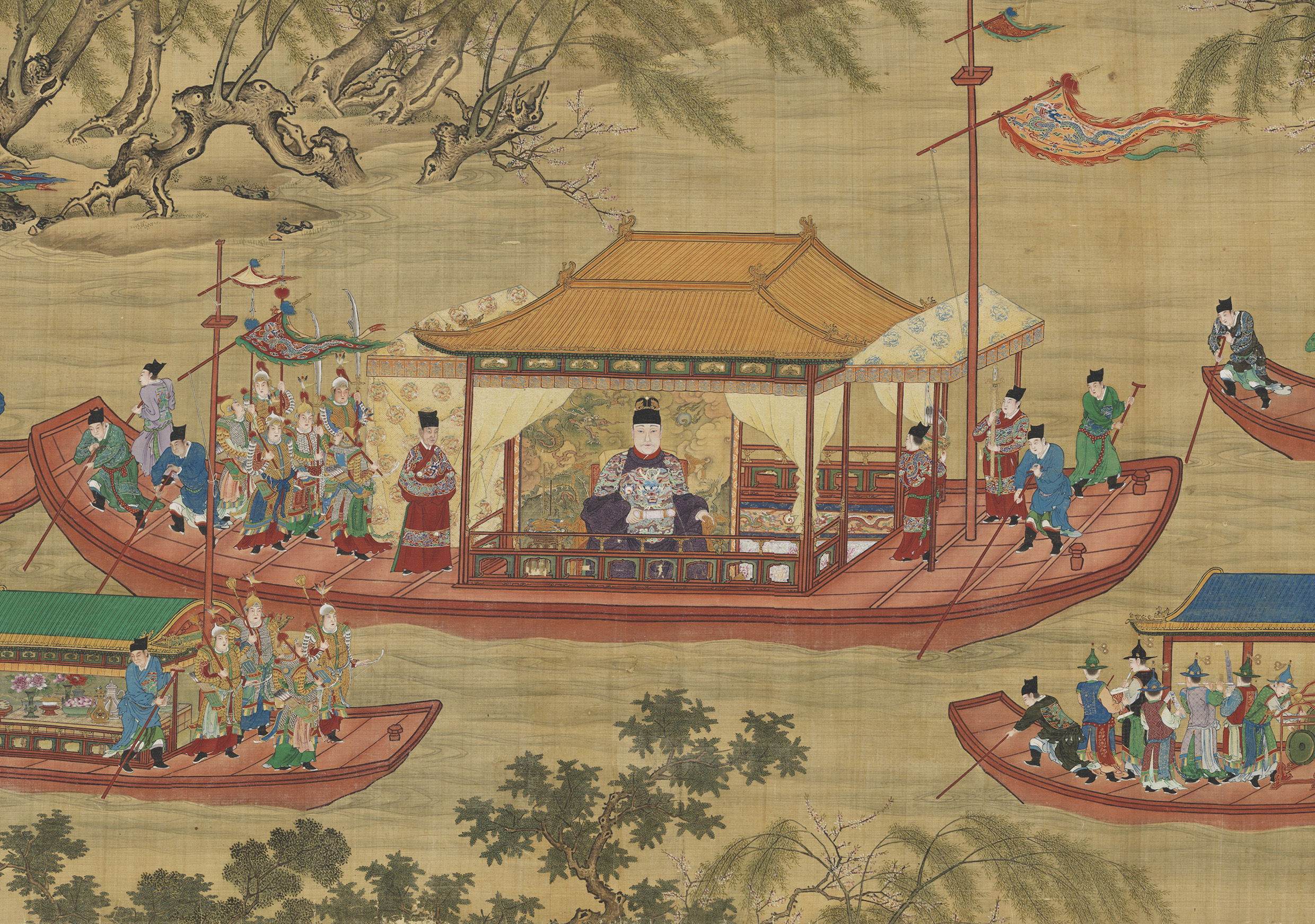Since 2011, the National Palace Museum initiated a series of high-resolution long scroll painting animations. Using the latest technology, several high-resolution 1080 HD projectors seamlessly unfold sceneries from classical long scroll paintings on the wall. The painting animation series reproduces nine popular paintings and calligraphy, including Along the River During Qingming (Qing court artists), Spring Dawn in the Han Palace (Qiu Ying), Imitating Zhao Bosu's Latter Ode on the Red Cliff (Wen Zhengming), Syzygy of the Sun, Moon, and Five Planets (Xu Yang), Departure Herald (Anonymous), Return Clearing (Anonymous) and Activities of the Twelve Lunar Months (Qing court artists), One Hundred Horses (Giuseppe Castligione), The Cold Food Observance (Su Shi), Poem in Seven-character Verse (Huang Tingjian). Inspired by historical material related to the artworks, the animations faithfully present the true spirit of the original paintings and their most attractive parts. A fascinating feature of the long scroll painting is its ability to simultaneously manifest chronological continuity and segmentation. As a result of the unique painting scale and traditional right to left reading direction, painting compositions unfurl accordingly and emphasize horizontal relationships. Oftentimes, scenes occurring at different points in time were depicted on a single scroll.
Introduction
Film Summary
Departure Herald and Return Clearing
Anonymous, Ming dynasty
Departure Herald Imperial Procession Leaving the Palace
- Handscroll, ink and color on silk, 92.1 x 2601.3 cm
Anonymous, Ming dynasty
Return Clearing Imperial Procession Returning to the Palace
- Handscroll, ink and color on silk, 92.1 x 3003.6 cm
In this handscroll is a great imperial procession making its way to pay respects at the imperial tombs. Departing from the Te-sheng ("Victory") Gate of the Peking city wall, the artists here depicted shops along the way and the appearance of ceremonial guards to the final destination of the imperial tombs, the final resting place for Ming dynasty emperors 45 kilometers from the capital at Mt. T'ien-shou.
"Departure Herald" is actually accompanied by another long handscroll painting entitled "Return Clearing". That work depicts the process of the tomb sweeping and inspection tour. Usually considered as a pair, they are collectively known as "Departure Herald and Return Clearing".
Encapsulated into both scrolls, the artists depicted the entire event over time and space from the departure, arrival at the destination, and return to the capital. The traditional means of viewing "Departure Herald" is from right to left, whereas "Return Clearing" is from left to right. "Departure Herald" represents the emperor riding a horse, taking land route from the capital, while in "Return Clearing", he is shown riding on a boat, taking a water route back to the palace.
These two scrolls are not only the two longest handscrolls in the collection of the National Palace Museum ("Departure Herald" measuring 26 meters and "Return Clearing" more than 30 meters in length), they represent a rare, enormous effort in terms of the number of figures and majesty of the scenery seen among surviving works of Chinese painting.
Neither of these two works were signed or sealed by the artists who painted them. However, judging from the style, content, and great effort, it most likely took a cooperative effort of many court artists in order to complete these two great masterpieces of imperial Chinese painting.


